The Samsung Galaxy S6 and S6 edge Review
by Joshua Ho on April 17, 2015 9:00 AM EST- Posted in
- Smartphones
- Samsung
- Mobile
- Galaxy S6
- Galaxy S6 Edge
System Performance Cont'd: GPU Performance
As previously mentioned, the Galaxy S6 uses a Mali T760MP8 clocked at 772 MHz, which should provide a healthy improvement in GPU performance over the Exynos 5433. To test this, we run through our standard suite of game-style GPU benchmarks. However, there are still some CPU benchmarks present within these tests such as the 3DMark physics test. In general though, a strong GPU is needed to perform well in these tests. For those interested in an architectural deep-dive of the Mali T760, I would refer to Ryan’s article on the Midgard architecture for more information.
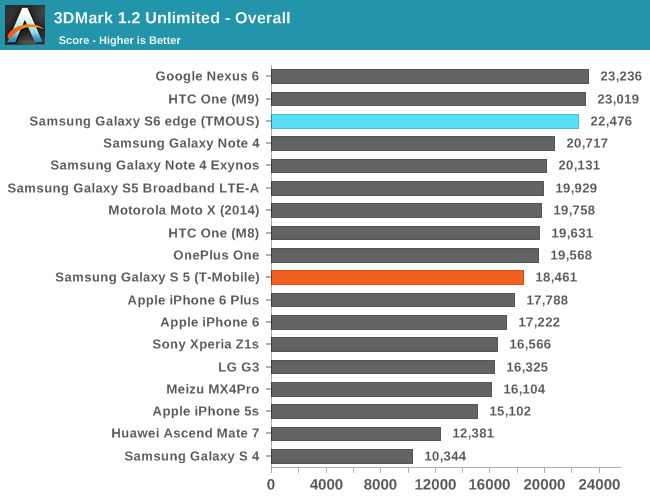
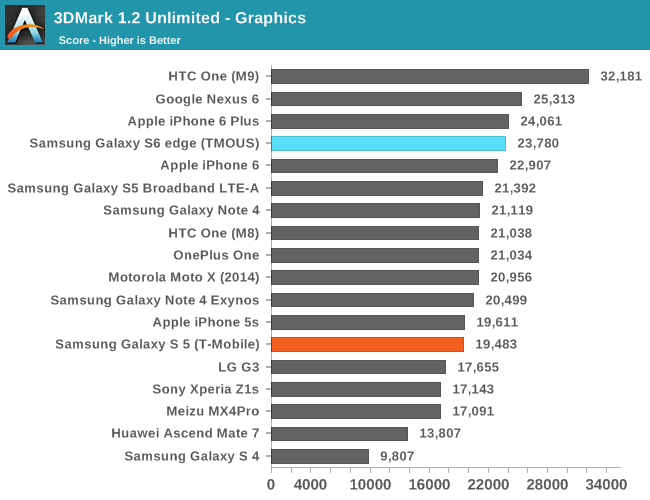
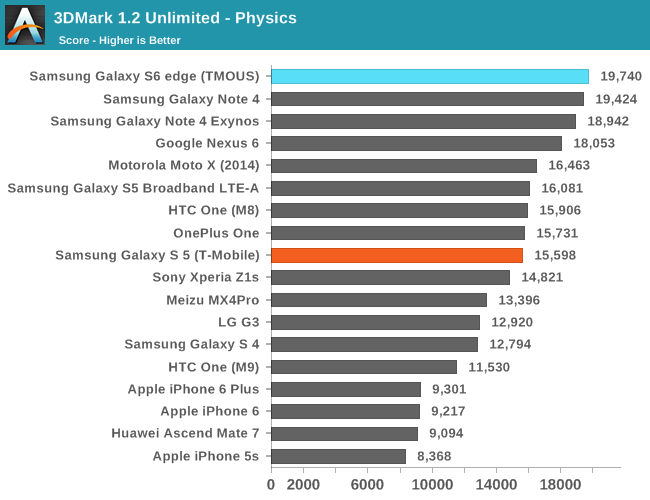
The Galaxy S6 starts out fairly strong in 3DMark. Overall performance is boosted by a chart-topping physics score, while pure graphics performance trails a bit. In this case the S6 is roughly on par with the iPhone 6 Plus, but would have to close quite a gap to catch up to the HTC One (M9).
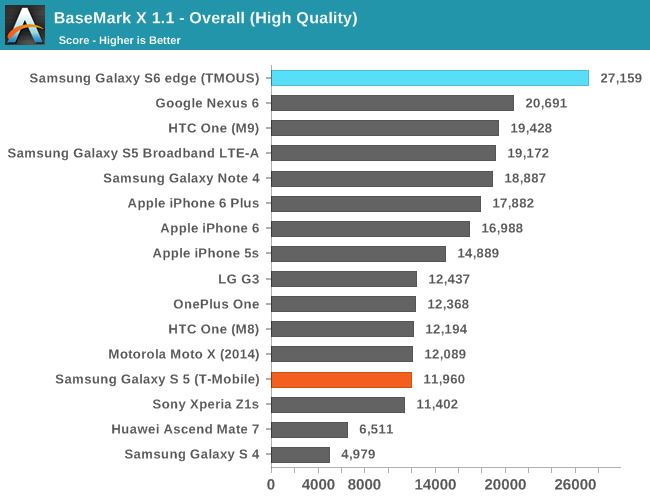
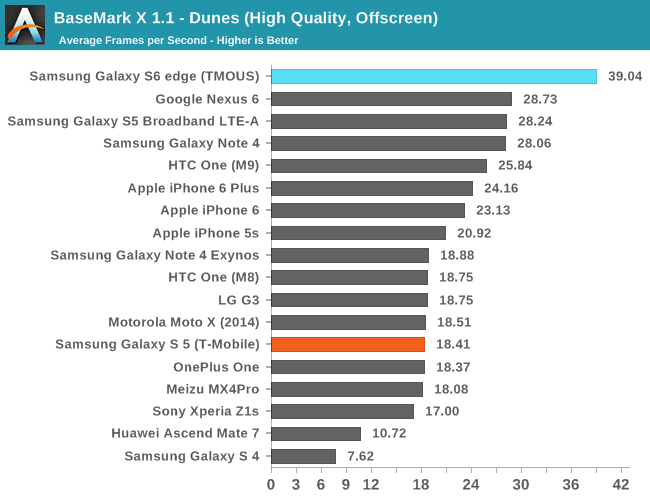
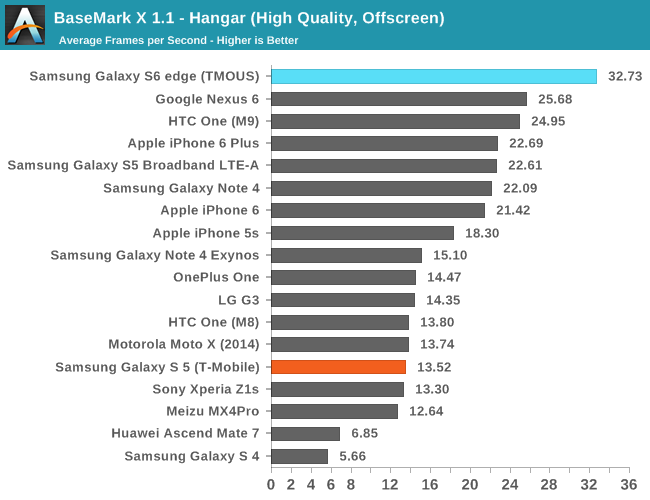
BaseMark X finds the S6 the runaway winner. The phone is well ahead in both the Dunes and Hangar test, beating the next-best phones (primarily Adreno 420/430 based) by 25% or more depending on the test. The increase over the S5 is especially remarkable; Samsung has more than doubled their performance in this benchmark in barely a year.
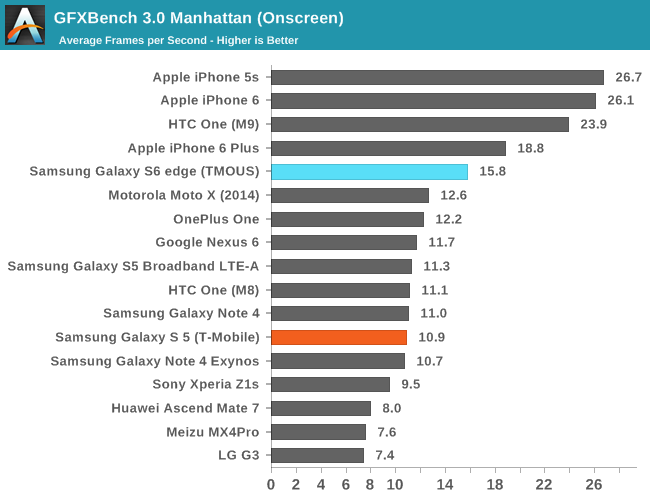
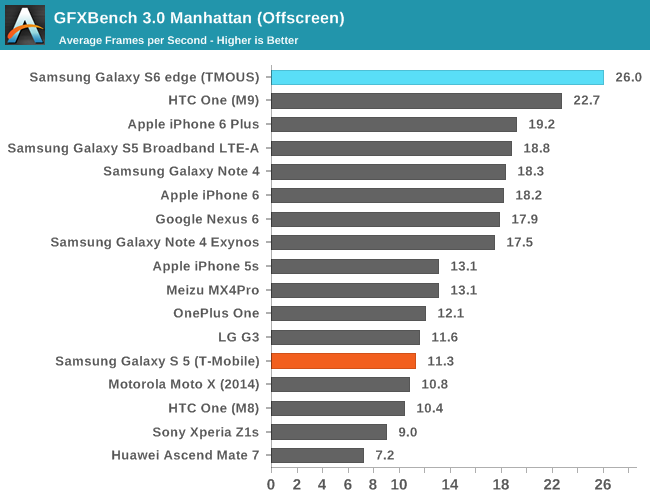
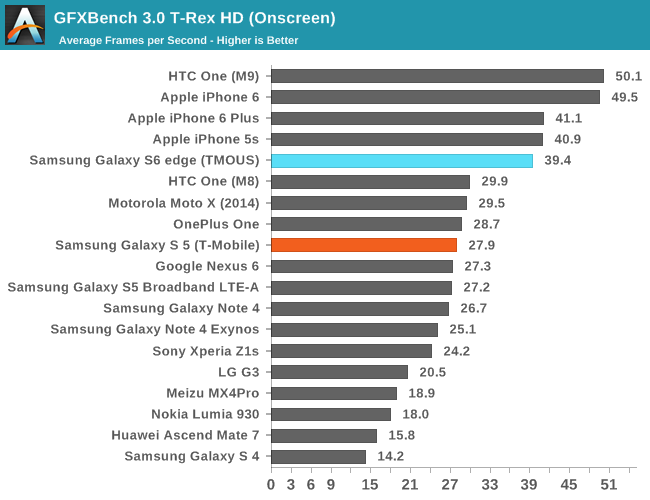
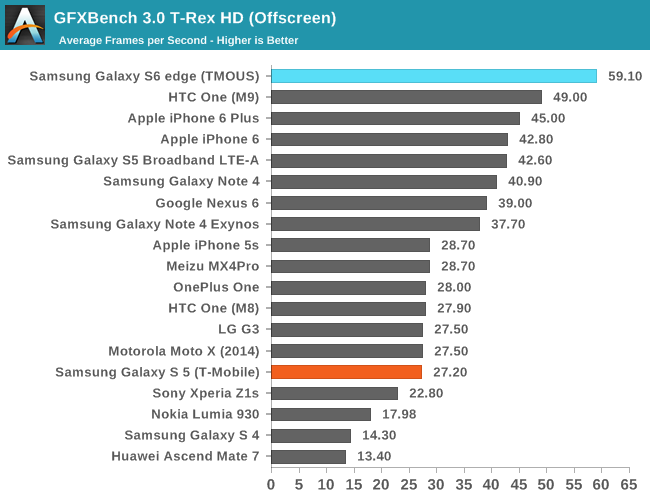
GFXBench 3.0 is another strong showing for the S6. In both offscreen tests it's 15% or more ahead of the next closest phone, which is once again the HTC One (M9). Meanwhile compared once more to the S5, Samsung's performance has more than doubled. Consequently even the onscreen tests show significant gains, as the GPU performance gain more than outstrips the additional performance required to drive the higher resolution 1440p AMOLED display of the S6.
Overall, as we can see the performance of the S6 is in line for what is expected from its Mali T760MP8 configuration. Interestingly though the phone's performance exceeds the scaling we'd expect from adding two shader cores and increasing frequency to 772 MHz, as compared to the Exynos 5433-powered Note 4 Exynos. This suggests that the Exynos 5433's GPU was bandwidth-limited to some extent, in addition to any possible thermal throttling that would occur over the course of a GFXBench run. But I suspect we'll have to save the deep dive for a future article as I can't take the review unit apart to find out.










306 Comments
View All Comments
Vandam500 - Friday, April 17, 2015 - link
On the specs table in camera architecture you listed the S6 having a 20.1 megapixel camera but it has a 16 megapixel camera.JoshHo - Friday, April 17, 2015 - link
Apologies for the error, it has been corrected.cj100570 - Friday, April 17, 2015 - link
I love how reviewers keep calling the Galaxy S 5 a failure. Sure, it didn't sell as many units as Samsung may have hoped, but it was still the best selling Android phone of 2014 by a wide margin by all accounts. If that's failure, the other Android manufacturers need to learn how to fail so spectacularly.lilmoe - Friday, April 17, 2015 - link
+1FlushedBubblyJock - Friday, April 17, 2015 - link
Seriously, it was the highest seller by a lot and the reviewers condemned it... ?Well, the "elite snootsters" probably hate the peonic rabble public (privately, depths of their nerdgourd ), of course.
So anything they buy en masse "negates the need for the nerdy idiot reviewer overlord".
fenneberg - Friday, April 17, 2015 - link
+2Ryan Smith - Friday, April 17, 2015 - link
It was a good phone, don't get us wrong.However it did miss Samsung's sales expectations, and quite significantly. This is something that we think is important to point out, as understanding this helps to understand why Samsung made the design changes they did for the S6. Technology doesn't occur in a vacuum, so it's very useful to understand the business considerations as well.
name99 - Friday, April 17, 2015 - link
Well, now you know how people feel when they hear someone claim the iPhone 5C was a failure...The numbers I can find (which are obviously not the most recent) have the Galaxy 5S sales numbers as of Dec 2014 at 12 million, with the 5C sales as of July 2014 at 24 million.
lilmoe - Friday, April 17, 2015 - link
The 5C wasn't a "failure", just a *ripoff*...Speedfriend - Friday, April 17, 2015 - link
"I also see almost no benefit to the MST module as magstripe transactions will be obsolete by October of this year when United States banks switch over to chipped credit cards and will no longer accept liability for fraud in magstripe transactions."Firstly, only 50-60% of US POS terminals are expected to be EMV compliant by the year end.
And secondly many of the first wave of EMV POS terminals are not contactless enabled even here in the UK which has had both chip and pin and contactless for a while.
So Samsung magstrip payments will still be a useful product probaly for a number of years, especailly if it doesn't relay on a seperate agreement with the merchant like Apple's does.